Clothes moths, a wardrobe pest
Have you spotted clothes moths while putting your clothes away ? Are they starting to invade your wardrobes and dressing rooms and you don't know where to start ? An invasion of textile moths can cause serious damage to your wardrobe if you don't take action. In this dossier, you'll find a range of answers and natural products to help you combat this insect.
|
I would like to |
|---|
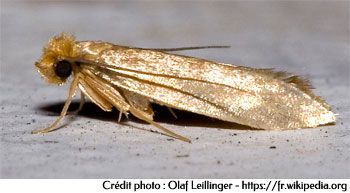
Latin name : tineola bisselliella
Order : Lepidoptera
Family : Tineneidae
Size : 1.2 to 1.5 cm
Location : any habitat
Period : all year round
What you need to know about the clothes moth
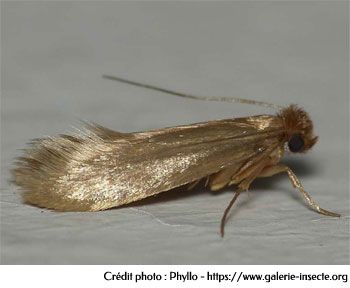
Like the food moth, the clothes moth, which comes from hot countries, can only live in heated places where the temperature is around 25°C. It can easily withstand temperatures of 35°C and a total absence of humidity. Feeding mainly on dry animal matter, the larva can attack fabrics, leather, feathers, furs, wool and occasionally flour or dried meat.
The females lay between 100 and 200 eggs on a support that can feed the future larvae, and then die. The larvae hatch around 2 weeks later and reach adult size after 3 months. In good heating conditions, you can therefore have several generations per year. In unheated premises, this cycle can be reduced to a single generation, which appears in July.
Female moths don't fly much, but tend to walk. It is mainly the male moths that we see flying, and which we will try to eliminate.
But it's the larvae that cause the damage. To feed and form their cocoon, they dig tunnels in the surface where they were laid. Beware: when they are born, the larvae's small size means they can pass through holes as small as 1/100 mm. If your clothes are in slipcovers, make sure they are completely airtight. As the moth does not like to be disturbed, it is mainly textiles that are not used very often that are attacked.
Depending on the region and climatic conditions, the first moth flight takes place in May, with a second, generally weaker flight at the end of the summer (August/September).
As well as the clothes moth, we can also find the carpet moth (Trichophaga Tapetzella) and the fur moth (Tinea pellionella).
A - As a preventive measure
1. Place a few anti-moth sachets on the shelves of wardrobes or cupboards (cedar essential oil disturbs their olfactory receptors).
2. Hang a few Aries anti-moth diffusers (lavandin essential oil and margosa extract keep moths away) or anti-moth hooks (geraniol-based) on wardrobe rails.
3. Place a few moth traps in cupboards and wardrobes. By catching male moths, you can determine the level of infestation and reduce the population by limiting reproduction.
4. Only store very clean clothes (human odour attracts them) and treat clothes before storage with anti-moth spray.
5. Discover our Armoire d'Antan synergy (composed of lavender, cedar wood and lemon). A few drops on coat racks, cotton wools slipped into a wardrobe or drawer and you're pleasantly protected.
 The products you need for preventive treatment against clothes moths
The products you need for preventive treatment against clothes moths
Go directly to the detailed product sheets for preventive treatment against clothes moths.
B - Curative treatment and in the event of heavy infestation
1. Empty your cupboards completely.
2. Treat the entire cupboard with our 4J insecticide diluted at 5%, not forgetting the cracks and nooks. Allow 500 ml for 5 m² of surface area to be treated. For larger areas, use our 4J concentrate and dilute it with 5% water. Don't forget any spaces to increase your chances of eliminating both eggs and adult moths that may be present.
3. When it comes to fumigation, Habitat fogger complements the contact treatment of 4J: Insecticide based on active ingredients of plant origin (pyrethrum + geraniol), designed for basic treatment of the home. Highly volatile, the solution settles in the smallest nooks and crannies where parasites and insects live. Immediate and prolonged action, for up to 4 months. This fogger comes in 3 different sizes: 75ml for treatment of less than 15m², 150ml for treatment of less than 30m². Finally, 250ml, for a treatment of more than 30m².
4. Place a few clothes moth repellent sachets, an Aries moth repellent diffuser or moth repellent hooks in various places in the cupboard.
5. Place a textile moth trap in each cupboard.
6. Wash all woollens and natural fabrics or treat with moth repellent spray anything that cannot be washed. Note: Cold (<0°C) kills eggs, but also moths and larvae. Heat (>40°C) is also an extermination solution.
7. Put your belongings back in the cupboard.
8. Once a week, you can treat the volume of your cupboard with either Ecodoo insecticide or Aries flying insect repellent, which are pyrethrum- and alcohol-based products that are volatile and do not wet surfaces. Close the cupboard tightly and leave the insecticide to work for several hours.
 The products you need for curative treatment and heavy infestations of clothes moths
The products you need for curative treatment and heavy infestations of clothes moths
Go directly to the detailed product sheets for curative treatment against clothes moths.
*PAE : ready to use.
Many people contact us every year because of an invasion of clothes moths in their raw wool insulation. This seems to be a fairly common problem and one worth addressing.
Wool is essentially composed of keratin, a protein also found in hair, nails, feathers, etc., and on which moths feed. In the absence of protective treatment, moths can wreak havoc.
In theory, raw (unwashed) wool is protected from insects by soot. In practice, however, this is not always true, as many people have found moth infestations just one year after installation.
On the eco-bio forum, we found this text by Jean-Pierre Oliva, author of "l'isolation écologique" published by Terre vivante :
"I mentioned in this book that raw (unwashed) sheep's wool was protected from moths by the ooze, which acted as a repellent.
There are hundreds of self-built houses insulated in this way that have not caused any problems for decades. But after reading this book, I learnt of a few cases of serious moth infestation (sometimes requiring the whole insulation to be redone).
I don't have a definite explanation for these attacks (nature and origin of the wool, climatic conditions, etc.), but the fact remains that you can't claim that soot provides lasting protection. In any case, all potential users of this material should be warned.
It's a shame, because using a local resource was very attractive.
You should also be aware that wools that have been washed and treated with synthetic products have sometimes also been infested.
To my knowledge, the only long-lasting and effective mothproofing and fireproofing treatment for washed wool is one based on boron salts".
see also the Terre vivante website.
The problem will be different if your insulation is under the eaves or the roof. In summer, the temperature behind the slate can become very high (50 to 60°C, or even higher in full sun in some parts of France). Few products can withstand these temperatures for several months.
Boron salts and moths
Boron derivatives are mineral products known for their fire-retardant and fungicidal properties. They therefore offer a really interesting alternative to chemical insecticides for treating wood against wood-eating insects. Some manufacturers of wool-based insulation use boron salts to provide effective, long-lasting protection against moths. The wool is soaked in a solution of boron salts so that the fibres are impregnated evenly and in sufficient concentration to provide lasting protection.
Boron salt or sodium tetraborate or borax (cas: 1303-96-4) is not classified as an insecticide. On the other hand, disodium tetraborate or boric acid (Case: Cas 1330-43-4) is authorised as an insecticide, but only for treating wood.
If you consult the product data sheet on the European Commission website, they are classified as Toxic, R60 and R61 in low concentrations.
Anti-moth treatment for sheep's wool
Preventing moths : There are several solutions for treating sheep's wool :
- the sulcofuron (mitin ff) CAS : 3567-25-7 (risk phrase 20/22-51/53), which inhibits the synthesis in moths of the enzyme that enables them to digest keratin. Note: as this product no longer appears in Annex II of biocides, it may no longer be authorised, at least in this case.
- The konservan. Despite our research, we were unable to find the composition of this product, but it would appear that permethrin is its active ingredient. A member of the pyrethroid family, this light-protected insecticide can have a very long, but not unlimited, residual effect. Ask about the anti-moth guarantee when you buy your wool.
- Boron salts, by soaking, to ensure uniform impregnation (see above).
Moth repellent :
Unfortunately, there are few really effective solutions. Some of our customers have treated with our 4J insecticide by spraying it directly into the wool from holes drilled in the partition (allow at least 1 hole per metre). According to their feedback, they've had good results. But realistically, if you want to be on the safe side... you'll have to repeat this operation regularly.
Treating a yurt against clothes moths
We were contacted by someone who owned a yurt and whose wool (insulation) was infested with moths. We recommended a complete treatment of the "walls" with our pure 4J insecticide, diluted to 5% (one 250ml bottle of concentrated 4J in 5 litres of water treats 50 m²).
A few months later, this person contacted us again to tell us about his experience and the results.
1 - Complete treatment of the wool, then rolled up like a carpet and set aside for 3 months.
2 - Complete reassembly of the yurt.
3 - The moths completely disappeared.
4 - A strong odour was noticed, which persisted.
Our opinion : We think it's a good idea to treat and then roll up. This allows the product to retain its properties for as long as possible. On the other hand, we think 3 months is too long.
Don't forget that 5% concentration indicates 95% water, and it's never advisable to store natural materials, especially damp wool, especially in hot weather. Heat and humidity naturally lead to the development of bacteria and the risk of mould and fungus (campers know that you should never store a damp tent... if it's made of cotton, the next time you unfold it, it'll smell of mould and tear!) We think that a few days are more than enough to destroy the moth colony.
Frequently asked questions about clothes moths
Q: Can I use 4J insecticide to spray my carpets and wardrobe bottoms to repel clothes moths ? If not, what do you recommend apart from small bags of moth repellent, which are too expensive (large house with lots of items to protect) ?
A: You can, but 4J is more of an insecticide than a repellent. If there are any, you'll kill them, but 4J biodegrades quickly and lasts no more than a day. You can use moth traps to check for the presence of moths and kill the males, thus preventing reproduction.
Q: I insulated a room in an old house with 20 cm of raw (unwashed) sheep's wool. The facing is plasterboard. In June, a lot of moths were coming out of an outlet. The surface area of my 2 walls is around 20 m². What moth-proofing treatment do you recommend ? I could drill holes in the plasterboard and cause seepage.
A: We've already had customers who've contacted us with this kind of problem. They solved the problem by injecting our 4J insecticide into the holes in the partition, at least 1 hole/m. It's important to remember that a single treatment may not be enough to completely solve the problem.
Q: Moths have invaded upstairs, causing major damage: holes in Lacoste T-shirts, among others! and food moths in the kitchen! EVERYTHING has been emptied, cupboards, linen rewashed, multiple cedar plates installed and it's WORSE; fear that all the beautiful clothes are ruined and entire wardrobe! can you recognise the cocoon? THANK YOU for getting back to me as I'm desperate.
A: For food moths, don't hesitate to consult our thematic file on this subject. Customers who have followed this page have got rid of food moths for good. For clothes moths, it's the same principle but it's more complicated in the sense that it's impossible to protect clothes in watertight boxes. For clothes that you can't wash, you can 'treat' your clothes with our Ecodoo insecticide or the pyrethrum-based Aries flying insecticide before putting them in airtight plastic bags to kill the larvae. As with food moths, you can install anti-moth clothing tags.
Q: How long does clothing moth repellent last in sachets ?
A: It's an essential oil-based product, so the shelf life depends on the temperature, 3 weeks on average.
Q: I'd like to insulate an attic with sheep's wool. But moths are a serious problem ! Could treating the wool with a dilute insecticide spray be a viable solution ? How long would your product last ? Does the product remain effective in temperatures below 0° ?
A: We regularly have customers who contact us about moths in raw wool insulation. Our product doesn't last long enough to be used on a long-term basis. Most current insecticides don't last more than a few months (especially in summer, when you can have high temperatures behind a roof). I wouldn't recommend this solution; look into hemp instead.
Q: I have a one-year-old child and a pregnant woman at home. What insecticide can I use against moths that won't be dangerous for these fragile occupants of my home ?
A: We have a special page on moths on our website. All our products are safe under normal conditions of use.
Q: What advice can you give me on how to get rid of moths in fairly large quantities in a house in Angers ?
A: First of all, you can apply a basic treatment of liquid insecticide and then use Penntybio anti-moth granulated sachets. You can find all this on our website
Q: I'm a private individual and I've noticed that there are moths in my house and I don't know what to do. I've already put mothballs outside the rooms (bedrooms) and in the wardrobes: nothing works. In my bedrooms, the wall covering is half paper and half fabric, is that it ? I don't understand ? Can you shed some light on this ?
A: Here's what we can say about clothes moths: Development: The clothes moth does not have a sheath, so this is a useful criterion for differentiating the two species at the larval stage. However, if it does not construct a sheath, it leaves behind a silky trail as it progresses. She can also weave silk tunnels where she will feed. In both cases, the female lays her eggs (40 to 50) on the seams of fabrics, in piles of dust or on a dead animal. The eggs adhere to the fabric and hatch after 4 to 10 days. The larvae live for 30 to 40 days. In some cases, it may last only 8 days. The adult lives for 15 to 30 days. A complete life cycle takes between 6 and 12 months. Habits: Clothes moths attack a wide range of fabrics, furs, pet food, powdered milk, stuffed animals, hair, woollens, carpets, draperies, etc. They have a preference for soiled clothes, but also for clothes that have been moth-eaten. They have a preference for soiled clothing. If clothes moths have a choice between sugar-soiled table linen and a clean jumper, for example, the decision won't be difficult for them. Moths don't like light. So if you see moths flying around light sources, don't worry, they're not moths. Control: If the infestation is heavy, we recommend treatment with our 4J insecticide.
Q: We live near an old flour mill (10 m) and have renovated our home by insulating it with raw sheep's wool. We've noticed a heavy presence of moths, with larvae in the wool. The surface area affected is around 40 m² under the roof. How can we take sustainable action ?
A: Normally there's no connection between the flour mill (flour moth) and your wool (clothes moth). Your problem is the problem of many people who have insulated with raw wool and are infested with moths, see our page clothes moth "Raw wool insulation".
Q: Can you tell me if it's safe to use the following essential oils on a small cotton pad: Lavender or lavandin, Lemon, Rosemary or Cedar as moth repellents in wardrobes to protect clothes, especially those of my children who are 3 and 6 years old ?
A: There's no danger as long as no child can touch the cotton and lick their fingers. On our website, you'll find a blend called "Armoire d'Antan", which is made up of lavandin, cedar and lemon.
Q: You suggest using 4j insecticide, but this is a contact product. I'm wondering how it can work when the female moths and larvae are hiding in the least accessible nooks and crannies ? Is it really useful ? Can clothes moths come from somewhere other than wardrobes ? I see them from time to time in the living room ? Do you have any other advice on how to get rid of them? Would you advise me to repeat the treatment ? What is the difference between the two Ecodoo insecticides and all aries insects ? Finally, is a fumigant necessary ? Aren't aerosols sufficient ?
A: As you've said, our insecticide is a contact insecticide. It will only work if you can get it to come into contact with the eggs, larvae and adult moths. The potassium soap in the formula acts in particular as an asphyxiant (by mechanical action) on the eggs. This insecticide should be applied to the inside of wardrobes and cupboards, and you're right to target corners, nooks and crannies as a priority... all of which are potential hiding places for female moths to lay their eggs. Clothes moths are so called because they mainly attack fabrics, leather, feathers, furs, wools, etc. So you can expect to find them in your wardrobes or clothes cupboards, but also in other rooms where textiles may be stored (laundry room, garage, attic, etc). Clothes that are worn less often are the first target for moths. They can then settle in undisturbed.
In your case, I'd advise you to carry out the treatment as methodically as possible.
1 - Empty all your wardrobes and cupboards (don't forget the stacks of single items of clothing) and machine wash at 60°C those items that can be washed and treat the rest with our Ecodoo All Insects spray (Put the clothes in bin bags and spray them with the spray. Close tightly to make it as airtight as possible. Re-open the bags 24 hours later).
2 - Treat the inside of cupboards, wardrobes, etc. with our 4J 5% insecticide, making sure you get into all the nooks and crannies. Aries All Insects aerosol can be used to complete the interior treatment of furniture. The fact that it comes in aerosol form means you can spray the product into places that are harder to reach. Finally, our Habitat Biovétol fogger will complement the action of contact insecticides by fumigation.
3 - Once everything has been treated (furniture + clothing), re-install everything and, as a preventive measure, spray the textiles with our moth repellent spray, then place moth repellent sachets on them to prevent new moths from settling in.
Finally, to answer your last questions : Ecodoo aerosol has added alcohol, which makes it more volatile, and therefore more effective for treating closed volumes (stays in suspension longer). As for Tous Insectes Aries, it is formulated with paraffin for a strong asphyxiant effect on insect eggs. It also has a more directional spray pattern, enabling it to reach hard-to-reach holes and crevices. If the aerosols target all the insects (from the egg stage to the adult stage), the fumigant won't be necessary. However, there is never a 100% guarantee that you will be able to hit them all. Fumigants increase your chances of eliminating them all by complementing the action of other products.
Q: I'd like to use 4-day insecticide on my wool stock, which I'll put in airtight boxes. I've just read that it's a contact insecticide. Obviously I wouldn't be able to touch all the surfaces of the balls and unspun wool because they are very thick 3-D balls, and the moths are inside. Is this product still suitable and in what dilution, and how long should I leave them locked up ? Or would you recommend another product ? Concerning the conservation of the 4j, would it be sufficient to store it in the basement without a window, illuminated by a lamp only when we pass by, or is there a risk that the product will deteriorate ? Is room temperature sufficient or is it imperative to put it in the fridge ?
A: 4J is a contact insecticide. It is therefore highly effective at eliminating insects from the moment it comes into contact with the insect. You can perhaps proceed methodically by treating the surfaces of the pellets with the 4J, then sealing them in bin bags in which you take care to use the Ecodoo aerosol (a few sprays are enough). In this way, the 4J + Ecodoo will destroy the moths both by absorption of insecticide and by asphyxiation. Close the bags tightly to make them as airtight as possible and wait at least 48 hours before opening them again.






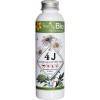
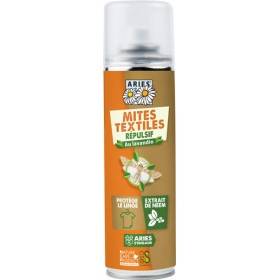
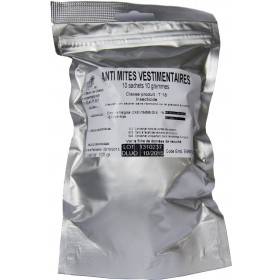
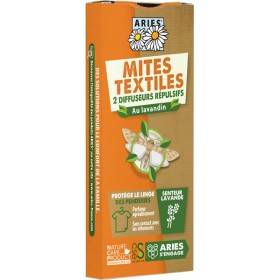
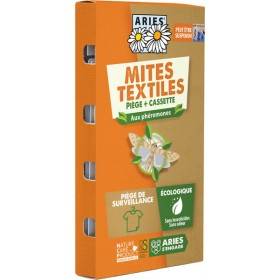
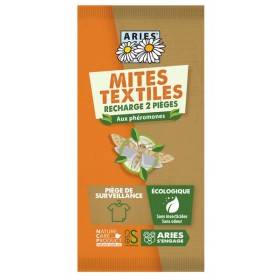
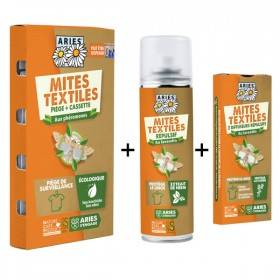
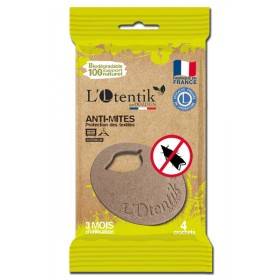
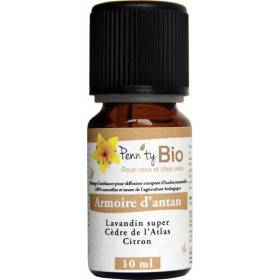
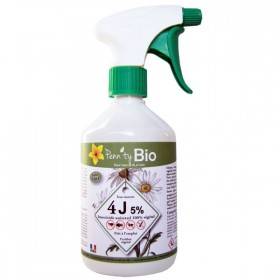

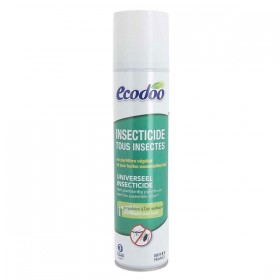
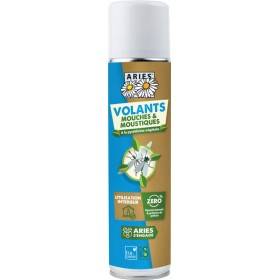
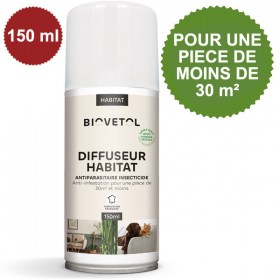
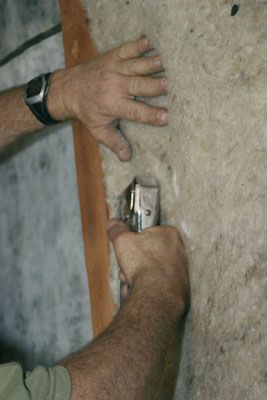
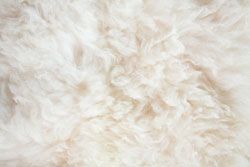
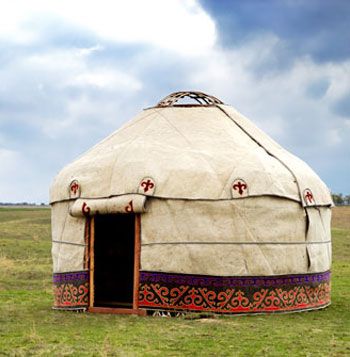
Customer reviews
Rapide, sérieux et qualité, produit correspondant à la description, très contente, je recommande votre site et vos produits.
Corinne
THIERRY
Totalement satisfait. Les produits sont super efficaces et tout est très bien suivis. Je recommande vivement ce site.
Stéphane N.
Après 2 traitements à 3 jours d'intervalle, j'ai réussi à éradiquer toutes les punaises de mon canapé. Produit hyper efficace que je recommande vivement.
Emmanuelle
Site intéressant proposant de bons produits, attractifs et respectant la nature. Le regret c'est le prix de certains articles.<br />
Catherine
Service rapide et efficace. Bons produits
XX
Tout était parfait l’envoi la livraison merci beaucoup
XX
Super efficace !!!
xx
Envoi rapide et soigné. Emballage ecoresponsable. Je suis ravi d’avoir trouvé des pièces de rechange pour les diffuseurs à huiles essentielles!
Ina L.
Service rapide et efficace. Et Sympathique ! toujours un petit mot, ça fait la différence. Et c'est français en plus :). Je recommande.
XX
colis dans les temps,emballage parfait,super accueil téléphonique pour renseignement, je recommande ce site.
ROSCO
Les produits achetés sur le site sont de très bonnes qualités, et j'ai été très bien conseillée. Je recommande !
Aurore
Tout va bien. Bonne année 2021.
Bernadette M.
Bon produit , envoi rapide.<br /> <br /> <br />
Christine
Ravie de découvrir un site qui présente des produits de qualité avec une vraie démarche éco responsable à des tarifs intéressants.
XX
Livraison rapide , produits de qualité, je recommande Penn'Ty Bio.
XX
Alex
Je trouve l'essentiel sur le site à des prix défiants toute concurrence. Continuez comme cela.
XX
Je suis arrivée sur votre site en cherchant un diffuseur que je viens de commander, mais je voudrais vous dire que votre site est très intéressant, bien fait. Vos dossiers sont enrichissants merci
Joelle
Parfait. Rien à redire. Extrêmement efficace.
Quentin
C'est ma première commande chez Penn'Ty Bio, et ce ne sera pas la dernière.<br /> J'étais à la recherche d'un nouveau diffuseur d'HE et, après discussion avec Quentin, mon choix s'est arrêté sur l'Elixia (Direct Nature) qui est d'une efficacité redoutable et d'un silence absolument surprenant.<br /> La livraison s'est faite en 72h en point retrait avec un conditionnement hyper sécurisé.<br /> Lors du déballage, j'ai constaté un léger défaut de finition sur la verrerie.<br /> J'en ai fait part à Quentin par texto avec photos à l'appui.<br /> Il m'a aussitôt recontacté pour me proposer un envoi d'une nouvelle verrerie dès que disponible.<br /> Un professionnalisme et un sens du service exemplaires qui font de cette enseigne une valeur sûre.<br /> Penn'Ty Bio est vraiment la boutique en ligne qu'il vous faut connaître.<br /> Je vous la recommande vivement.
Jean-Yves S.
Efficace, livraison rapide.<br /> <br />
H
Toujours aussi "réactif" et efficace<br /> Bravo et merci pour votre professionnalisme.
Annick P.
Livraison rapide et fiable, dès que le chèque a été reçu. Produits de bonne qualité.
Chantal H.
Une grande compétence, Monsieur Dufil est très professionnel et sait soigner ses clients. Quand à la gamme de produits proposés, elle est parfaite et complète.
Alain A.
Jean Claude
Super !
Yann
Après essais de divers produits, votre insecticide 4J est le seul à être venu à bout des puces ramenées par le chat de la maison. Livraison rapide par chronopost
JEAN MARIE
Hyper cher :: très déçue du prix par rapport à la quantité de produit acheté. Sur le site internet, les flacons semblent grands, or pour 80 euros je me retrouve avec 4 flacons de petits produits insecticides... trop cher
xxx
Bonjour <br /> C'était ma première commande sur votre site et j'en suis très satisfaite <br /> Je vous remercie pour votre professionnalisme (site, prise de commande, livraison) ainsi que pour le petit mot qui rend le tout humain. Très belle journée.
CG
Merci. Je tenais à vous faire part de ma grande satisfaction. Je suis enchantée par les produits et par le service. Salutations et bonne continuation,
Odile
J'ai bien reçu mes articles et je vous remercie pour la livraison rapide et impeccable !
Françoise
Très bon site. Navigation facile. Les commandes sont expédiées rapidement comme annoncé. Aucun problème depuis que je suis cliente. Je recommande Penn'ty bio.<br />
Elvyne
Merci et surtout, continuez, c'est rare de trouver sur internet une relation aussi personnalisée sur un mode aussi agréable.
Sabine
J’ai découvert cette société en faisant une recherche sur Internet pour trouver un insecticide contre les sclérodermes. Je ne peux pas encore juger l’efficacité de chacun des produits par contre je suis très satisfait de la rapidité et de la qualité d’expédition, ainsi que du sérieux de la société. J’ai même reçu un petit échantillon est un mot personnalisé j’ai trouvé ça très sympa! Merci beaucoup et bonne continuation pour votre société que je recommande déjà.
BJ79
Très bon produit juste ce qu'il faut à prix attractifs Envoi rapide.
xx
Livraison ultra rapide, bien emballée. Produits au top. Parfait !
Caty
Excellent site rapide et efficace. Descriptif intéressant.
XX
Juste ce petit mail pour vous dire que j'ai bien reçu votre colis et que mon patron est enchanté ! Ca embaume les huiles essentielles dans le bureau et... ça ne fait pas de bruit ! Encore un grand merci pour votre gentillesse et votre souplesse commerciale.
Sonia
Françoise
Une entreprise fiable, efficace, de confiance, chez qui je recommande de faire ses achats.
S.
Toujours très bien et parfaitement emballé ! Merci<br />
Valérie
Commande bien reçue. Je suis tout à fait satisfaite. A bientôt.
Tania
Merci pour tout le soin que vous mettez pour une livraison individualisée, chaleureuse et aussi peu impactante que possible sur l'environnement !
Sandra
Livraison rapide , le tout correspond à mes attentes.
Julie
Tout était parfait. Produit, prix, délai.
Marco
Commande passée le jeudi soir, colis livré chez mon "commerçant-relais" le samedi matin. Quelle rapidité ! Du vrai professionnalisme !
Emeline
Très satisfait du site livraison rapide.<br />
Michel
Bien, la majeure partie des produits sont efficaces. Je connais cette boutique depuis plusieurs années, je recommande ce site.
XX
Envoi très rapide et bravo pour votre site de reconnaissance des insectes nuisibles.
Brice
Pour ma part j'ai été satisfaite de la réalisation de ma commande et du délai de livraison. Je recommande votre société.
Nelly
Site très sérieux, de très bons produits et la livraison est rapide.<br />
Isabelle
livraison impeccable, produit bien emballé et correspondant au descriptif, excepté pour la surface de diffusion, ma salle principale doit faire 25m2 maximum et ça ne se diffuse pas au-delà.
Pascale
excellent.
XX
Livraison toujours rapide. J'ai expérimentée le service après vente qui à été excellent avec une réparation rapide et sans frais. Je recommande vivement Penn'Ty bio
Nadine
Bon produit mais frais de port un peu cher.
Marie Paule
C'est la deuxième fois que je commande sur ce site. J'ai découvert qu'il existait des verreries aux dimensions différentes. Mon diffuseur étant ancien, j'ai chercher le modèle le plus adapté et j'ai trouvé! Mon diffuseur fonctionne à nouveau
Christiane D.
ANNE
Je suis ravi de trouver les produits de qualité et d ‘efficacité incomparable.
Denitza K.
Très bien, je recommande cette boutique
Salomé
Personne disponible, de très bon conseil suite à des punaises de lits dans mon habitation, les produits sont efficaces car depuis aucune punaises et la vie à repris son cours ... merci pour tout
Nathalie
C’est la première fois que je commande sur ce site et pas déçue livraison rapide de ce produit que l’on ne trouve pas partout. Je recommande
Patrick
Commande reçu en 2 jours, impeccable. Tous les produits emballés avec le plus grand soin, petit mot personnalisé! Et encore un petit savon bio au parfum délicieux comme cadeau!! Merci Penn'Ty Bio !!
Orchidée
C'est extrêmement délicat de votre part d'avoir fait diligence. Je ne manquerai pas de recommander votre site et de souligner votre gentillesse. Encore merci
Michel
Service clientèle très réactif en cas de difficultés. Livraison rapide. Emballage des produits fragiles excellent. Maison sérieuse, je recommande.
Marie
J'ai reçu le colis, merci beaucoup de votre promptitude et bonne continuation.
Louise
Merci beaucoup pour l'info, c'est rapide chez vous, très appréciable!
Denis
Super produits accueil plus que parfait gentillesse. Livraison au top merci beaucoup
Christiane
rien a redire, sauf, le montant des frais de livraison, un peu élevé.
XX
Merci et bravo pour la qualité des produits et du service toujours aussi efficace et performant.
Annick P.
Des produits très efficaces quand on suis dans l'ordre le traitement. Un léger petit bémol sur le spray insecticide, si possible essayer de trouver un spray plus puissant et plus large pour une diffusion optimale dans les coin et recoin inaccessible. Sinon tout est nickel est une excellente qualité de résultat.<br /> PS: Il faut prendre tout les produit pour un traitement efficace en foyer privé (maison).
Florian G.
Merci pour vos conseils avisés. Et merci pour vos produits de qualité.
Loïc
Livraison très rapide et colis emballé soigneusement.Site à recommander.
isabelle d.
Je voulais juste vous remercier. J ai reçu mon répulsif " lézards" aujourd'hui, un petit mot super gentil joint à ma commande ça fait plaisir. J espère que ça va fonctionner. Bonne journée à vous et merci.
Cynthia
Livraison rapide et très bien emballé et protégé. Très bonne efficacité. <br /> <br />
XX
Site de grande qualité !
Rose Anne Marie
Une utilisation de vos produits a suffit pour nous débarrasser des poissons d'argent. Merci.
Matthieu
2 commandes à mon actif et jamais déçue. Vous avez gagné une cliente régulière :) Merci pour votre sérieux et le contenu bien rempli de votre site ! c'est super d'avoir une description hyper détaillée de chaque produit.
clara
Très satisfaite.
Louise
Bonjour Sophie & QUENTIN, Merci pour votre petit mot. . . . Ça fait chaud au Cœur de voir qu'il y a encore des Gens Comme VOUS sur cette planète ! Le monde devient de plus en FOU ! ! ! Cordialement.
Dominique T.
Commande reçue assez rapidement. Merci pour votre sérieux.
Émilie
Parfaitement parfait, je ne me fournis que chez Penn'ty bio depuis qu'ils m'ont débarrassée de punaises de lit.<br />
MARIE CLAUDE G.
Site pratique, compétent, prix corrects. Un envoi très rapide, et je dirai "parfait".
Greg
Produits conformes aux descriptifs. Délai de livraison respecté. Satisfaite du nébuliseur qui est superbe.
VR
en comparaison d'autres produits employés précédemment, je trouve les vôtres beaucoup plus efficaces et cela sur le court terme ,disparitions des odeurs en combinant les produits suivant vos conseils .
XX
Un grand merci pour la qualité et la rapidité de votre réponse.
Tony
Très bons produits, service rapide et de qualité, rapport qualité/prix intéressant. Je recommande vivement.
Alain
Mon avis sur penntybio, très bon produit sur ce site pas une gamme monstrueuse mais que du très bon, et pareil pour les livraisons ultra rapides et le excellent sav si besoin. Je recommande vivement. Client depuis 2018 aucun soucis.<br /> <br />
thierry g.
Très bon site avec de très bons produits et un soin particulier apporté à la préparation de chaque commande... De plus, Sophie et Quentin prennent la peine d'écrire un petit mot de remerciement avec la commande envoyée....c'est peu commun mais très sympa....:-)
STEPHANE P.
Tout est parfait de la commande à la réception. Commander jeudi et reçu samedi. Et très contente de mon achat . Je recommande
Nadege M.
Très contente de vos produits.
nathalie G.
Très bon produit, conforme à la description.
MICHELE P.
Livraison rapide, emballage plus que parfait, le diffuseur NEOLIA est merveilleux pas bruyant, fonctionnement idéal. Merci PENNTYBIO pour votre sérieux, site web à recommander.
CLAUDE
Livraison efficace et bon contact oral avec mon interlocutrice.
Maussane
très bons produits et service commercial très performant, continuez sur cette voie, merci.
Annick
Merci beaucoup le colis est arrivé à la poste hier et je te retire aujourd'hui Merci pour votre efficacité et votre rapidité
Ingrid
livraison tip top tant en temps et en qualité.
XX
Très réactifs entre la commande et la livraison. Je suis toujours satisfaite de mes commandes soigneusement emballées !
France L B
Fiable, et très bons produits , Service après vente efficace et sympathique.
Vilma V.
Merci pour votre sérieux et la réexpédition ultra rapide d'un achat non conforme (dont vous n'étiez pas responsable).
Marc
fiable et de bonne qualité pour les services et les produits :)
XX
Produit conforme aux attentes.<br /> <br /> <br /> <br />
Alain
Très bien , bon produits, La prochaine commande avec plaisir, livraison très rapide.<br />
Rainer
Correspond à mes attentes
Henry
Un grand merci pour la qualité et la rapidité de votre réponse.
Simon
Au fil de mes commandes (j'en suis à la 5 ou 6ème) décidément, du sérieux et de l'écoute ! chaque fois que j'ai eu un petit problème: contact immédiat, réponse immédiate, et tir rectifié illico ! Dans le top 5 de mes sites internet !
Vincent
Très bon site. Envoi rapide. Prix moins cher que sur d autres sites. Bravo et bonne continuation.
Camille
Louise
Boutique très sérieuse avec un envoie rapide et des produits super efficaces.
XX
Livraison rapide et produit conforme à la description. J'approuve à 100% le principe du recyclage des éléments d'expédition. Un produit fabriqué une fois soit avoir plusieurs vie. Bravo pour cette initiative.
Christophe
Très bonne adresse où l'on trouve des alternative aux produits chimiques notamment contre les insectes. Le service client est également de très bons conseils.
ck
Marie Aline Roux
Commande bien reçue;je suis tout à fait satisfaite;à bientôt
Sonia
Service au top !!!<br /> Colis reçu très rapidement avec un petit mot manuscrit me remerciant de ma commande et de la confiance que je leur ai témoigné <br /> Suffisamment rare pour être signalé <br /> Je vous encourage toutes et tous à les soutenir en passant commande chez eux!!!!<br /> Longue vie à Penn’Ty Bio !!!!<br /> Ils le méritent
Pierre-Steph
Merci à tanteOdile pour m’avoir fait découvrir votre site. Depuis je suis une cliente assidue. Très satisfaite de la rapidité des envois, de la qualité de vos produits qui sont par ailleurs très bien détaillés par leur composition et leur mode d’emploi. Une amie vous a rejointe également avec la même satisfaction <br /> Continuez.
Marité D.
Commande et livraison rapides!<br /> Rien à dire, c'est parfait !
Christine
Excellent site. Très à l'écoute. Livraison rapide. Problème avec un piège à guêpes un autre m'a été livré très rapidement. Chapeau et très agréable de tomber sur des gens compétents.<br /> Encore merci.
XX
Modèle conforme bien emballé délai respecter continuer comme ça parfait.
Carlos
Livraison très rapide et produits bien emballés.
Catherine
Bon site, fiable, rapide et efficace.
Leo L.
je viens de réceptionner ma commande. Tout est ok. Merci pour ces produits respectant l'environnement et l'être vivant.
Anatole
Excellents produits. Excellent service.
James T
Parfait comme site, commandes faciles à faire et livraison rapide !
Cindy
Tout est parfait à chaque fois. L'attention portée va même jusqu'au petit message, c'est agréable. Fidèle aux produits et au site plus que jamais.
xx
J'ai toujours été satisfaite de mes commandes chez Penn'ty bio. Rapide efficace. Surtout les caractéristiques des produits est claire et complète. et le site contient beaucoup d'informations sur les différentes gammes. Merci pour votre travail et votre activité.
XX
Bravo et merci : produits de qualité et service TOP... continuez !...
XX
Un grand merci pour cette commande envoyée très rapidement. Je recommanderais votre site
Elise
merci pour votre professionnalisme. Merci pour les produits envoyés dans de bons délais. Merci pour la qualité de vos produits
Marcelle
Produits performants. Très satisfaite de vos services.
XX
Dimanche soir, invasion de vrillettes du pain. Lundi matin, commande en urgence des produits verts adéquats. Mardi, livraison, traitement et fin de l'invasion.
Jean-Pierre
Bonjour, j’apprécie depuis longtemps votre travail : la qualité de vos informations et des produits que vous vendez.
Frederic
Bon rapport qualité-prix. Envoi rapide et sécurisé !
Chrile
comme toujours excellente réactivité, livraison très rapide et qualité produits TOP. Merci pour votre compétence.
Annick P.
J'ai découvert ce site en cherchant de la terre de Diatomée. Livraison rapide. Très sérieux. J'ai mis la page dans mes favoris car j'ai repéré d'autres produits.
Isa
Grande gentillesse et efficacité : que demander de plus ? Merci !
Chantal M.
Livraison très rapide; Tout était parfaitement emballé. Je referai appel à vous.
JV39
Bonjour. Je souhaite vous remercier pour votre rapidité. Le colis est arrivé en bon état . Les huiles que nous avons commandées embaument la maison. Ce diffuseur est génial.
Christian
Bonjour, je voulais vous féliciter pour la clarté de votre site, la rapidité de la livraison et la qualité de l'emballage.
catherine R.
En cette période d'avant Noël, je craignais que me colis arriverais en retard. 48h après mon achat, c'était dans la boîte aux lettres. Du coup, je suis large pour mettre mon achat sous le sapin. Merci à vous
Art4
Très bien ! envoi rapide et conforme à ce qui est annoncé.
Jacqueline S.
Un super magasin en ligne, avec plein de produits disponibles.<br /> L'envoi a été très rapide et soigné, avec une très bonne communication à chaque étape. Bref, une adresse à connaitre et à garder ! Merci !
Pab57
colis reçu ce jour, merci pour le flacon offert
Andrée
Rapidité de traitement et petit mot avec le colis très appréciable.
XX
Site clair, envoi rapide, marchandises bien emballées, et un petit mot charmant!
SM
accueil téléphonique personnalisé réactif compétent et bienveillant, livraison rapide et conforme. BRAVO merci pour la qualité de votre travail
Annick
Envoi rapide, emballage au top, continuez comme ça... :-)
bruno b.
Cliente depuis plusieurs années. Super service, réactif, cordial. Les produits sont excellents.
Christine
Efficacité redoutable. enchanté.
Robert
Toujours satisfait et pour les prix et pour les produits.
andré a.
Bon produit. Merci Penn'Ty Bio. Un seul passage dilué à 5% et les puces ont disparus. Il en restait deux ou trois qui ont dû se perchés pendant le traitement mais sinon c'est performant.
Axel
Très bien...merci.
Olivier
Les produits sont de bonne qualité. Leur prix est raisonnable. Ils sont livrés rapidement, et en bon état.
XX
Excellent article sur les diffuseurs d'huile essentielles ! grâce à lui j'ai pu faire mon choix basé sur une excellente analyse de votre part !
Laurence
C'est vraiment magnifique et ce cadeau a plu, je commanderais pour Noël.
Martine
Très satisfaite de ma commande chez Penn'ty bio. Site très détaillé, produit reçu rapidement, message manuscrit très sympathique. Je recommande !
XM
Très satisfaite du produit.Rapidité et emballage très soigné.SERIEUX.
MARLENE
BIEN,CONTINUEZ COMME çà.
XX
Excellent service et livraison rapide. A conseiller pour la santé des animaux (chiens et chats)
MICHEL
Nous sommes très satisfaits du service client : mot personnalisé dans le colis, disponibilité du service après-vente... Nous souhaitons à votre société un succès croissant.
Sara
Envoi très rapide, personnalisé et soigné. Merci
XX
Marie-Noëlle
Tout est parfait : la qualité des produits, la rapidité d'expédition, la qualité du colis. Je suis enchantée et resterai fidèle à ce site.
Dominique
Un diffuseur plus de 80 M², avec huile essentielles eucalyptus, vraiment formidable, on respire mieux et çà sent super bon. Le matin 1 heure, et le soir 2 heures. De jolies couleur, et pour les fêtes une jolie ambiance. Bravo.
PATRICK
Livraison très rapide. Bravo pour la réactivité
François
Livraison très rapide et produits intacts à l'arrivée grâce à un emballage impeccable.
Etta
Infestés de puces de parquet, le produit a agi en moins de 24 heures. Livrés en tout autant de temps. Le seul produit qui ait fonctionné et en plus archi cool pour la nature.
Nicolas
I had a marvelous experience with ordering and everything ! Thank you for a great service.
XX
Parfait! Préparation et expédition de la commande hyper rapides. Emballage très soigné (j'ai acheté un produit fragile). <br /> Je suis très satisfaite!
Elise M.
Merci pour votre geste que j’apprécie.<br /> Cela fait plaisir de retrouver l’esprit commerçant de proximité chez un vendeur en ligne. Je surveillerai attentivement cette nouvelle livraison.
Philippe
Rien à redire, de la commande à la livraison.
XX
Toujours impeccable, les produits, les services. Depuis que j'ai changé de facteur, plus de soucis. (Ça n'est arrivé qu'une fois!!!)
XX
Efficacité de la livraison , très rapide . Produits livres en parfait état . Très bien emballés . Merci.
Geneviève
Je ne connais pas encore tous les produits mais contente de ce que j'ai commandé. En revanche un peu cher quandmême ce qui me limite.
xxx
Merci beaucoup pour votre rapidité et votre professionnalisme.
Julie
Boutique sérieuse. Commande arrivée très rapidement. Merci pour votre gentil mot avec la facture.<br /> <br /> <br />
I Defoy
Livraison en temps record à l'adresse indiquée en France puis départ dans l'océan indien. Reception des produits en quinze jours à l'autre bout du monde : ravie. Je vous laisserai les avis produits une fois utilisés. Le site est très bien fait et très agréable à utiliser. Le petit mot à la main dans le colis humanise la transaction, je l'ai apprécié. Je pense que vos produits sont très utiles et je vous souhaite une belle réussite et sur la durée.
Sylvie D.
Pas encore essayé le produit, mais le site est très sérieux. Livraison dans un temps éclair, même si je suis en Belgique. Emballage soigné. On peut faire confiance.
Roberta
Rapidité de livraison. Très bon produits. Merci
Mélina
Parfait !
Mireille
Je suis vraiment très satisfaite de la prestation de ce fournisseur : délai de livraison très rapide et emballage des produits réalisé avec un maximum de soin. Bravo !!
Eliane
Client depuis de nombreuses années, je suis satisfait à la fois de la boutique et de pratiquement tous les produits achetés.
Jean-Claude
Colis bien arrivé. Emballage remarquable. Diffuseur très joli, très efficace et peu bruyant avec de la couleur qui change. Très satisfaite de la commande.
Sabrina
Je suis cliente depuis de nombreuses années. Toujours satisfaite du site, des produits et de la livraison.
martine O.
Contente de voir que d’autres alternatives naturelles aux produits plus nocifs soient proposés. Entreprise sérieuse dont commandes sont très bien honorées. Merci.
Capzoe
anne-marie B.
Je parlerais de vous a mes amies car vos produits sont vraiment excellents. Bien a vous et tous mes remerciements.
Patricia
Commande reçu très correcte, très bon matos, encore merci et bonne continuation.
Dominique et Monique A.
merci pour le suivi de ma commande et les mails par lesquels vous m'avez tenu informée.
Zoé
Produit de qualité conforme à mes attentes, envoi rapide et soigné, très bien.
Anne
Très rapide pour la livraison en Belgique et sérieux. Merci<br />
Corinne
1ère commande. Très satisfaite : Colis expédié très rapidement et bien emballé. Merci pour votre sérieux.
Ghyslaine
Pennty bio prends le temps de renseigner et donne de très bons conseils.<br /> Les produits sont emballés soigneusement et la préparation des commandes hyper réactive. Je recommande les yeux fermés !
Mattloumag
Envoi rapide. Rien a redire.
Marie France
Livré hyper vite. Bravo !
Mick
Quel dommage pour le produit manquant, je vous remercie pour le remboursement.
Didier
Commande reçue rapidement, frais de port raisonnables pour expédition à l'étranger et les produits sélectionnés au top! Merci!
Cédric Adolphe B.
J'ai été très déçue de ne plus trouver mon déboucheur dans mon biocoop habituel, et perplexe en apprenant qu'il était remplacé par un produit à base de soude...c'est comme ça que je vous ai trouvé sur internet.<br /> Alors merci pour le dépannage, pour le mot gentil qui accompagnait mon colis , et bravo pour le calage en amidon de maïs compostable!<br /> Bravo pour votre démarche et à très bientôt.
Cécile D.
Service de qualité, suivi rigoureux, et rapidité au rendez-vous. Les produits sont très fidèles à leur description et pour un coût serré. A recommander fortement.
JACKY
Bonjour Monsieur,<br /> Nous nous étions parlés au téléphone il y a quelques années. Bravo pour l'évolution de votre site et vos dossiers instructifs. Vos produits aussi sont très bons. Bonne continuation, bien cordialement.
Marina
Je voulais vous remercier +++ pour votre gentillesse et surtout... votre compétence. C'est vraiment de l'excellent travail... j'ai été bluffée :-)<br /> Renseignement téléphonique 10/5 - produit 10/5... encore merci
Maryse
J’ai bien reçu le nouveau diffuseur fonctionnel après essai et je vous remercie pour votre confiance et votre rapidité sur le traitement de mon problème. Ce n’est pas tous les jours que l’on voit un SAV aussi efficace !
Florent
Les produits commandés sont conformes à mes attentes. Quant à l'accueil au téléphone, il est parfait et nous avons toujours trouvé un terrain d'entente. Je fais confiance à Penntybio.<br /> Merci.
XX
Parfait.
Philippe
Merci pour cette première commande, envoyée très rapidement, et dans un petit colis, avec frais de port très raisonnables.
Valérie O.
Cliente fidèle depuis plusieurs années, je ne peut que recommander ce site. Tout est parfait. Tous les produits au top, rapidité d’envoi, gentillesse, allez y les yeux fermés vous ne serez jamais déçus.
Marité 06
Site très pratique. Commande aisée. Suivi régulier. Délai de livraison respecté. Colis très soigné. Tout est parfait.
Nicole
Excellent!! Commande passée le lundi, reçue le mercredi!!! Les produits sont en plus de super qualité !
MADELINE
très bien je recommande.
Sylvie
Merci pour votre efficacité et votre gentillesse, commande, livraison, petit mot agréable, tout était parfait !
Sylvie
Commande tout à fait conforme et emballée avec grand soin.
Sarah
J'ai bien reçu ce jour, en bon état, les 2 diffuseurs galets. Merci aussi pour votre petit mot manuscrit me souhaitant un bel été. Fidèlement,
Annie
Très satisfaite par Penn ty bio. En effet, suite à un produit défectueux ( housse matelas) , j'ai aussitôt reçu un bon de retour pour renvoi gratuit en colissimo et ai reçu la nouvelle housse dans les 48 h, avant même le renvoi de la première housse. Merci pour la réactivité et la confiance de cette entreprise.
dominique B.
Excellents services, très serviable
XX
On ne peut pas toujours faire confiance à des sites de ventes sur le web, mais sur Penn'Tio, j' y viens les yeux fermés. Excellente communication avec le service clientèle, un suivi sérieux. Je remercie chaleureusement toute l' équipe.
Sergine T.
Un accueil téléphonique très agréable et de très bons conseils. <br /> Merci à vous.
XX
Je suis une amie de vos parents et suis toujours très satisfaite de tous vos produits. Ne changez rien et bonne continuation.
Marité D.
J'ai été TRES bien conseillée lors du contact. Produit naturel donc c'est parfait.
Lilla
Après un souci sur l’article livré, le site a fait preuve d’une excellente communication (simple et efficace par sms) qui m’a permis de me faire livrer un 2nd article par la marque très rapidement. Parfait !
Pierre
Hélène
Très bon site, très sérieux je recommande, produits de qualité et service après vente au top, de plus livraison des plus rapide et produits très bien emballés, tout est parfait
virginie
Je tenais à vous remercier pour votre service de qualité, une livraison toujours rapide, des colis bien emballés - qui évitent fuites et casse, ainsi que pour le petit mot personnalisé joint à chaque commande, c'est toujours très agréable.
Isabelle G
Les produits ont été très appréciés par la destinataire. <br /> De plus quand on pose une question, on a toujours une réponse, un conseil très rapidement. Merci pour votre réactivité
xxx
Service très professionnel et très rapide. A conseiller fortement.
Didier M.
Très contente des produits de qualités et une commande reçu très rapidement. Merci
PATRICIA A.
Rapidité, emballage nickel et écologique, mot de remerciements personnalisé, produits au top....j adore....je suis une nouvelle cliente conquise. Un grand merci...
Hélène P.
je vous remercie pour vos services, c'est très agréable d'être informé de la sorte. colis bien reçu Merci pour la rapidité de la livraison
Bernard
Première commande chez Penn'Ty Bio : <br /> - navigation sur le site = 5/5<br /> - préparation du colis = 5/5<br /> - Prix compétitifs = 4/5<br /> - Qualité des produits sélectionnés = 5/5<br /> <br /> Vendeur à recommander.
Gaëlle
super emballage écolo...bravo !
Isa
Efficace rapide et à l'écoute. Diversité des produits. Efficacité des produits. Respect des délais de livraison et prise en compte des spécificités client PMR ( ce n'est pas toujours le cas). Site bien fait pour navigation et produits bien mis en valeur. Des promos et des bons de réduction cumulés en fonction des achats. Merci pour votre efficacité rapidité et professionnalisme.
xxx
J'ai bien reçu le diffuseur et j'en suis très content.
Paul
Livraison rapide et soignée. J'utilise les produits bio qui sont de très bonnes qualités. Un savon m'a été envoyée par erreur à la place de celui commandé et il m'a été remplacé très rapidement. Bravo pour leur réactivité. Je recommande fortement ce site.
Liliane
Colis très bien protégé service rapide. Merci. Site très sérieux .
Elios R.
L’esprit commerçant de proximité chez un vendeur en ligne !
Philippe
J'apprécie les services de Penn'ty bio. Un maximum d'étoiles pour eux.
Ch. D.
Noëlle G.
Suite à un précédent message notifiant une erreur de produit à la livraison, Penn'Ty bio m'a fait parvenir à titre gracieux le bon produit. Merci
Martine
Satisfaction totale. Entreprise au top. J'ai téléphoné le lundi matin, malgré que les contacts téléphonique ne sont que l'après midi, une personne très charmante m'a rappelé presque aussitôt pour mes donner les infos que je souhaitais connaître sur ma commande. Bravo. nous sommes mercredi et ma commande est arrivée. Encore bravo continuez comme ça.
Jacques M.
Bon produit, efficace et laisse une odeur plutôt agréable. Expédition rapide, emballé avec soins. Je recommande
Mary
Livraison rapide et avec colis préparé avec soin :)
Florian
Très bons produits je les recommande.<br /> Merci à Pennt'ty Bio pour tout, aussi bien pour les commandes et les emballages.<br /> Bravo Pennt'ty Bio.
Bernadette G.
Je tenais à vous remercier pour la commande que je viens de recevoir ce matin. Merci beaucoup et je n'hésiterai pas à recommander sur votre site.
Sandrine
bravo pour votre réactivité et la qualité des produits
Annick P.
Commande facile, livraison impeccable et produits fiables. Merci.
Isabelle
Excellente réactivité !!! Produit en stock, commandé le 23 dec à 8h30, recu le 24 dec à 9h30. On peut guère mieux faire ! Super communication avec le vendeur.
Xavier
J'adore. Très grande diversité de produits, les explications sont simples et complètes.Quand aux colis, ils sont extrèmement bien protéger. Un grand merci.
Nadine
Vos explications par email ont été très claires et votre diligence dans le traitement de ma commande et de mes demandes est très appréciée.
Henri
Très satisfaite. Merci.
CM
j'ai reçu mon colis aujourd'hui, merci c'est très rapide et sérieux.
Nathalie
Bons produits conformes à mes attentes et livraison au top. Je recommande vivement.
Chantal P.
Ma commande s'est déroulée sans aucun problème avec une livraison rapide et soignée. La satisfaction est au rendez-vs ! Continuez ainsi ! Merci et cordialement !
Etoile 07
MERCI au personnel à l’emballage !!! Ma dernière commande était super bien emballée. Elle a résisté aux (épouvantables) chocs subis pendant le transport. Merci
Veronique
Un grand merci pour votre offre et votre professionnalisme. Pour un service en ligne, vous savez vous rendre proche de nous. Bravo et "suerte" !
Pierre M.
Site sérieux, proposant de bons produits, efficaces en particulier sur les punaises de lit, fléau actuel. Merci car entre les produits et les housses de matelas nous avons réussi à les éradiquer dans deux maisons à deux ans d intervalle. <br /> Bravo aussi pour la livraison la plus écologique possible.
L.C
Entièrement satisfaite.
Ch. D.
Très bon site, du personnel sérieux et la livraison en temps et en heure. Merci
Marine T
Content des produits achetés, reçu rapidement et bien emballé. Merci.
XX
Félicitations pour la qualité de votre site & la valeur de ses informations ! Continuez ainsi ! On a besoin de vous !
Ronald
La livraison est rapide, je n'ai jamais était déçue de ce site, et les produits sont pas chers et de très bonne qualité!
Patricia
MOI JE DIS INCROYABLE !!!<br /> Plus que mieux d'une rapidité de dingue ! bravo et le colis impeccable surprotégé.<br /> Que toutes les entreprises prennent exemple sur vous. merci
AURELIE A.
Jamais déçue : les produits correspondent à la description et sont livrés rapidement.
Mireille
Claudine
J'ai reçu mon colis hier. Merci de vos démarches,
Sam
Site très réactif livraison rapide le produit Stop tique et puce est parfait sauf le pulvérisateur.
Danielle B.
Bravo ! je vous félicite pour votre efficacité ne manquerai pas de vous conseiller. Merci à la prochaine commande
Anthony
Comme d'habitude, envoi soigné, produits performants, Merci.
XX
Bons produits. Fonctionnent très bien.
xx
Très bien !
XX
Merci d'être à l'écoute pour notre terre et vos clients. Encore une fois je suis très satisfaite de ma commande. Et mes compagnons à 4 pattes sont ravis de se protéger en bio. Merci pour votre attention manuscrite en fin du bon de commande..
Raymonde julie L.
Produits d'excellente qualité, arrivés rapidement, et conformes à leurs descriptions.
Michelle G.
Très satisfaite. Je recommande cette société sérieuse. bon suivi de la commande.
Sandrine
Pennty Bio? Einfach genial. Super rapide , bon produits, super service-livraisons. Je vais recommander bientot =)
xxx
Très satisfaite de ma commande. Emballage soigné et envoi rapide. Merci beaucoup pour votre professionnalisme !
Sophie
Colis parfaitement emballé et produits conformes. 1 des produits était très fragile et est arrivé en excellent état, merci :o) Pourquoi achetez à l'étranger alors qu'on a de si belle s entreprises en France? Tarifs identiques ou moins chers que chez Amazon ;o)
Stéphane C.
Penn' Ty Bio, c'est ma référence depuis 10 ans au moins. Je ne commande mes produits de toilette et d'entretien que chez eux. Les marques et le service est irréprochable.
GAELLE
Très contente d'avoir découvert ce site internet ! Du conseil jusqu'à l'achat c'est super. J'étais très embêtée après l'apparition de petit insecte chez nous (des anthrenes) et c'est le seule site internet e-boutique qui a pu nous renseigner dessus et enfin indiquer les produits pour les éradiquer sans pour autant nuire à notre santé (mais en respectant les conseils d'utilisation bien sûr). J'ai reçu ma commande rapidement, et avec surprise un petit mot de remerciement personnalisé avec mon nom dessus. Des détails qui au finale font la différence. Un service de qualité rien à dire. Merci !
XX
De très bons conseils, une livraison rapide et des produits de qualité !
Fabienne P.
2 commandes à mon actif et jamais déçue. Vous avez gagné une cliente régulière :) Merci pour votre sérieux et le contenu bien rempli de votre site ! c'est super d'avoir une description hyper détaillée de chaque produit.
Magali
Tout à fait satisfait de la qualité de la livraison ainsi que du produit commandé.
Régis
Excellent site d'achat. Très rapide et que de bons produits.
James
Juste un petit mot pour vous remercier de votre disponibilité et pour vous dire également que je suis très satisfaite des produits que j'ai acheté, ils sont vraiment efficaces.
Barb.
Emballage au top. Livraison rapide et sans dégâts.
xxx
Penn'Ty Bio wonderfully served our family in Switzerland so that we could try the range of Totemsavon products, which are such caring, loving, and consciously manifested creations :)<br /> <br /> By allowing a shipment to Switzerland and elsewhere, I am sure so many more people would be able to benefit from the beautifully selected product portfolio in Penn'Ty Bio and all, together, make a conscious leap by using and demanding a way more purer approach to anything we interact with.<br /> <br /> Thank you so so much Penn'Ty Bio!<br /> <br /> In 8 Love We Heart Trust<br /> <br /> Miguel Ángel
Miguel Ángel
Site intéressant. Je l'ai découvert, en fait. Produits ménager éco-responsable. Bon pour la maison et non agressifs. Merci.
Mydiadao
Site très sérieux et personnel vraiment agréable. Envoi rapide. C est parfait !
Ingrid
Sav très réactif et efficace suite à avarie durant transport. La livraison du produit en remplacement du colis défectueux à été particulièrement rapide. Merci.
Valérie
Commande reçue rapidement, très bien
XX
Merci à Penn'Ty Bio pour la qualité des produits, la réactivité de l’Équipe et le petit mot attentif qui accompagne les colis. Votre site est précieux !!
Veronique B.
sérieux
XX
Site internet complet, beau et facile d'utilisation<br /> Commande complète et correcte.<br /> Commande emballée a la perfection avec du matériel recyclable, compostable<br /> Délai d'envoi respecté même a l'étranger (Pays-Bas)<br /> Mention spécial pour le petit mot personnalisé ++<br /> On sait pourquoi on commande chez Penntybio depuis 10ans :)<br /> Bonne continuation
Jennifer A.
Commande bien reçue . Je suis très satisfaite Merci pour votre sérieux
LILIANE
Client depuis des années Produits de qualités et surtout qualité de service.
XX
Bien reçu. Bravo pour votre extrême rapidité. Merci
Magali
interressante. Beaucoup d'articles référencés. Après pour la lutte contre les punaises de lit, je ne suis pas sure de l'efficacité de certains produits. C'est un vrai fléau ces bestioles.
Francelyne D.
Très satisfaite des délais, les produits sont bien emballés et le petit mot sympathique est fort agréable!<br />
Sylvana
clair net précis. merci
jannick
Parfait comme d'habitude
Sylvain
très satisfaite de ma commande site vraiment sérieux livraison soignée et rapide ,les articles sont conformes a la description,je suis enchantée et recommande vivement
Marie Viviane C.
yvette
merci de votre disponibilité et amabilité!
Eric
produit parfait.
René
Je me permets de vous écrire un petit mot afin de vous dire que votre site est très bien fait.
Tom
Comme toujours service "au top" réactivité, qualité produits... BRAVO et merci pour la qualité de votre travail
Annick
Parfait ! Envoi rapide et produits de qualité. Merci pour le petit mot. Je suis très satisfaite !<br />
Julieanaïs
Site sérieux. Bons produits.
Magali
Super, livraison rapide, suivi très rigoureux, site de confiance, très sérieux à recommander... Merci pour tout.
Bernard
Très bon produit facile en entretenir, pas cher.
XX
Je voulais non pas faire une réclamation; mais vous féliciter pour vos produits que j' ai bien reçue, et également pour la rapidité de votre envoi ce qui est plutôt rare dans d'autre site.
Jérôme
Dommage, les vendeurs ne savent pas lire les indications inscrites sur les produits qu'ils vendent
XX
Prix intéressants. Expédition super rapide à bon prix. Et tout ça de façon agréable !
Alexis M.
Fidèle à votre marque, je tenais par ce mail à vous féliciter vous et votre équipe pour votre longévité. Votre marque est toujours gage de qualité et sérieux.
Céline
Produits utilisés depuis très longtemps, toujours la même qualité ! Je recommande, les délais de livraison sont très courts, produits très efficaces.
Laurence
J'ai passé ma première commande, chez vous il y a trois jours à peine et ce matin, je reçois mon colis.
Sophie
J'adore ce site qui fait un vrai travail de sélection de produits que je ne trouve pas ailleurs et sur une large gamme. Je recommande.
Veronique G.
livraison rapide, produits bien enveloppés avec juste un petit bémol : pour l'imperméabilisant dont le couvercle n'était pas bien fermé.
Alain
Je vous remercie pour vos services. C'est très agréable d'être informé de la sorte.
Anthony
Produit performant et raisonnable au niveau prix. Je recommande
XX
Livraison rapide et petit mot manuscrit joint au colis, vraiment très sympa! Merci et continuez, vous le méritez.
Jean-Pierre
Envoie soigné et rapide.<br /> Merci pour le petit mot à la main.<br /> Très appréciable.
XX
Merci pour votre envoi : rapidité, ponctualité, information de suivi du colis etc. Vraiment du bon boulot.
E.G
Service de qualité, suivi rigoureux et rapidité au rendez-vous. Mon colis est arrivé vite même avec un paiement par chèque. Les produits sont très fidèles à leur description et pour un coût serré. A recommander fortement.
Vincent
Bonjour, colis bien emballé arrivé sans encombre, démarche écolo bien ancrée et petit mot perso. Merci à l'équipe de Penn'Ty Bio.
Sofi
Merci à Penn'ty bio d'avoir garder beaucoup de produits de la marque Lerutan et pour le sérieux dans la préparation et l'expédition des colis. Je recommande.
SR
Everything was very nice ! Keep handling your customers likes this!
xxx
Merci pour votre démarche si respectueux de l’humain, des animaux et de l’environnement !
A.F
Un grand merci pour votre professionnalisme et la qualité de vos produits. Longue vie à votre site.
XX
Maryse
Je vous remercie beaucoup de m’avoir fait profiter d’un acheminement par Colissimo alors que rien ne vous y obligeait, sauf votre conscience professionnelle, chose rare de nos jours et qu’il ne faut jamais manquer de souligner.
Cécile
Un plaisir de recevoir les colis soignés et respectueux de la planète de Penn’Ty Bio. Merci
k.
Produits livrés rapidement dans un colis non surdimensionné, les produits sont conformes à la description. Je recommande vivement ce site très bien fait !
Hervé
trés satisfaite de ma commande,( produit, et livraison,rapide ) MERCI
Danièle M.
Diffuseurs qui sortent vraiment de l'ordinaire, un envoi parfait - merci BCP
Anthony
Bravo ! je vous félicite pour votre efficacité et ne manquerai pas de vous conseiller.
Nicolas
Livraison rapide et bien emballé. Petit message manuscrit qui fait plaisir :)
xx
Sav rapide et disponible. Au top
Severine
Impeccable.
Christine
Produits facile à utiliser, efficaces et finalement pas plus onéreux, à l'usage que des produits issus de la pétrochimie. Service livraison impeccable. Je recommande +++<br />
XX
Très satisfait de Penn'Ty Bio : choix étendu,prix raisonnables délais de livraison rapides.
xx
Excellente communication, service très rapide (même à l'étranger), emballage parfait ...
Jacques N., Belgique
Toujours parfait, livraison, emballage, délai et gentil petit mot personnel pour me remercier de ma fidélité.
XX
Service très réactif, emballage soigné , livraison rapide. <br /> Rien à redire . Continuez !!
Sophie
Très bons produits efficaces.
XX
J’ai bien reçu mon colis et vous remercie de votre rapidité. Bravo pour le geste écologique et durable. Emballage nickel ! Et mon chat a adoré jouer avec les billes jaunes !
Anouk
Livraison express. Colis toujours aussi bien préparé (cales, flocons, adhésif sur les bouchons qui risquent de couler). Bravo pour votre professionnalisme.
Isabelle
Livraison très rapide. Notice livrée avec les produits ainsi qu un petit mot très agréable. Produits très efficaces, avec de l huile de coude, on en vient à bout. Le produit concentré nous a permis de tout éliminer. Par précaution, nous avons tout de même utiliser le spray. Dans une pièce, nous avons utilisé le fumigène. Pour les animaux, la mousse semble efficace. Dans quelques jours nous ferons le shampooing et plus tard les pipettes. Mais franchement après avoir utilisé d autres marques qui ne fonctionnaient pas, nous sommes ravies et nous recommandons ces produits. Merci
Virginie C.
fidèle cliente de Penn'Ty Bio, je ne me fournis que chez eux.
XX
Franchement, Penn'ty bio, c'est top ♥<br /> Quentin est super réactif, de très bons conseils. Encore merci de votre efficacité.
Hélios ☼♥
Site de produits naturels et bio très bien fait, agréable et fiable. beaucoup de produits de qualité.
Anne Marie R.
Vos produits sont de bonnes qualités et les produits très bien emballés
Dominique
Juste un petit mot pour vous remercier du message accompagnant mon colis ! Je croise les doigts pour que les produits marches mais entre-temps, je voulais vous remercier et en profiter pour vous souhaiter à mon tout un joli printemps.
Rose B.G
Explication, commentaire et livraison en un temps record, tout était parfait, même le petit mot de remerciement écrit à la main ! Merci beaucoup
Monique S.
Rapide, sérieux, très bien emballé, un sans faute.Merci.
L.H.
Bon produits et service !
Rose-Marie
Avec les trois lettres BIO dans votre nom, je ne m'attendais pas à découvrir des billes de polystyrène comme matériaux de rembourrage. Il y a certainement plus écolo !
Michel D.
Merci pour l'expédition de la pièce de verrerie qui a été recu cette fois sans casse. Meilleures salutations et à très bientôt sur votre site pour un prochain achat .
Louane
livraison rapide ,prix raisonnable , produits super efficace j'ai vite calmé mes douleurs lombaires ...enfin soulagée . Merci pennty bio
JEANNINE
Les produits achetés sont excellents. Ils répondent parfaitement à ce que je cherchais. Bravo pour votre site
Michel
Envoi rapide et soigné, produits efficaces et réponse rapide à mes questions. Je recommande.
xx
Je confirme efficacité sur la préparation et expédition du matériel. un grand merci
Jeremy
Cliente depuis plusieurs années, j'apprécie toujours ce site. Meilleures salutations.
France
Bonjour Sophie et Quentin,<br /> Je viens de recevoir ma commande et je tenais à vous remercier pour la rapidité de l'envoi, votre gentil petit mot et le petit présent qui sent bon et donne envie. Bel été à vous deux également
Geneviève
Produit anti puce extrêmement efficace !<br /> Le vendeur a pris une demi-heure de son temps pour m'expliquer absolument tout ce qu'il y avait à savoir sur le produit, de la composition a la mise en œuvre.. Bref au top ! Je recommande donc vivement Penn'ty !
Louis
Je vous remercie de votre professionnalisme et de votre réactivité.C'est loin d'être toujours le cas lorsque l'on commande sur internet.
Gaëlle
J'ai bien reçu ma commande. Com' dab' , rapidité efficacité ...Merci
Sally
super contente, j'y trouve facilement les produits dont j'ai besoin et le service est impeccable et gentil !
Hélène S.
Livraison conforme et rapide. Les produits sont emballés dans des emballages recyclables, voire compostables : j'ai beaucoup apprécié. Je recommande ce site.
Patrick
Bons produits, emballage impeccable, livraison super rapide ! Parfait !
XX
service très efficace à chaque fois que j'ai commandé. aucune mauvaise surprise sur la livraison. je recommande
Agnès
Sophie. A
J'apprécie depuis de nombreuses années la qualité de vos produits et le sérieux de votre site. Une petite mésaventure avec un diffuseur me permet de vous féliciter pour la réactivité de votre SAV. Bravo !
Thierry G.
JM
SATISFAITE
ANNE
Jean-Yves
j'ai bien reçu la commande et je vous remercie pour votre efficacité.
Margot
J'ai enfin reçu le petit colis, hier. Il a mis un mois pour me parvenir, mais vous n'y êtes absolument pour rien, comme je le pensais, il a été mis de côté lors de la grève nationale. Je vous remercie d'avoir fait faire des recherches, j'ai reçu un mot de la poste.
Hervé
Bon service et bon produits
Odile R
Une boutique en ligne, sympa et très réactive. On apprécie surtout la livraison express. Pas besoin d'être américain pour livrer dans des délais de champion !<br /> <br />
Daniel de Paris
Après la découverte des punaises de lit dans 2 chambres de notre vieille maison, j'ai trouvé votre site. le dossier m'a été très utile et je suis très contente d'avoir trouvé des produits moins toxiques que ce que proposent les autres sites de vente.<br /> Je vous remercie d'avoir répondu à mon mail car c'est un peu l'affolement quand on découvre chez soi des punaises de lit.
Françoise S.
Client depuis plus de 10ans. Toujours satisfait du matériel propose. Boutique sérieuse prix compétitifs livraisons et suivis rapide.
XX
Je viens de recevoir la pastille noire aujourd'hui et je vous remercie de votre envoi gratuit (ce qui est rare de nos jours).
Laurence
Excellentes prestations. Les produits sont formidables, l'emballage aussi. Les délais d'expédition compétitifs. Je recommande vivement Penn'Ty Bio à tous ceux que l'état de la Planète pour les générations futures inquiètent.
XX
Bon choix, bons conseils et service livraison très rapide. J'aime faire mes courses sur ce site.
FDA
Cela fait plusieurs fois que je commande chez Penn'Ty Bio et je suis toujours satisfaite de la qualité des produits et de la rapidité d'expédition. Je recommande ce site !
Ghyslaine
très bien livraison dans les délais, colis intact, bon produit.
Martine
Bravo pour votre sérieux. Colis reçu très vite et produits impeccables. Belles fêtes de fin d'année
Mat
Super produits, envoi rapide et soigné, conseils et échanges courtois ! Une jolie boutique en ligne pour acheter en toute confiance ! <br />
Patricia
Merci beaucoup pour la rapidité avec laquelle vous m'avez fait parvenir le diffuseur.
Bichette
Produits de bonne qualité, naturels et efficaces, expédition rapide et bien emballée, sav très rapide suite à une erreur de ma part,
XX
Très satisfaite, merci.
Christine
Livraison rapide. Produits bien emballés.
Bruno
Beaucoup de soins dans la commande reçue. Je recommande!
XX
livraison rapide, produit conforme.Prix séduisant.
XX
Merci pour le geste commercial, et aussi pour les nombreux conseils et l'excellent service client.
Tristan L
Excellent service après vente après un problème d acheminement de colis par la Poste. Une relation client de très grande qualité. <br /> Cordialement,<br /> <br />
PV
Super, envoi rapide,bien protégé et petit cadeau !
xx
Je suis très satisfaite de mon échange avec le service client (personne à l'écoute, de bon conseil). Envoi rapide et soigné, avec un petit mot sympathique de l'équipe, le top!
XX
j'ai reçu mon colis aujourd'hui, merci c'est très rapide et sérieux.
Clara
J'ai bien reçu le colis sans aucun problème. Merci pour la rapidité et le sens du service.
Nicolas
Commande bien reçue ! Bien emballée ! ! ! Jolis produits ! Merci !
AYH
Leave a review | See all